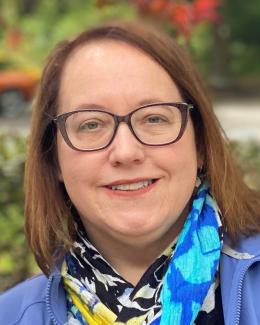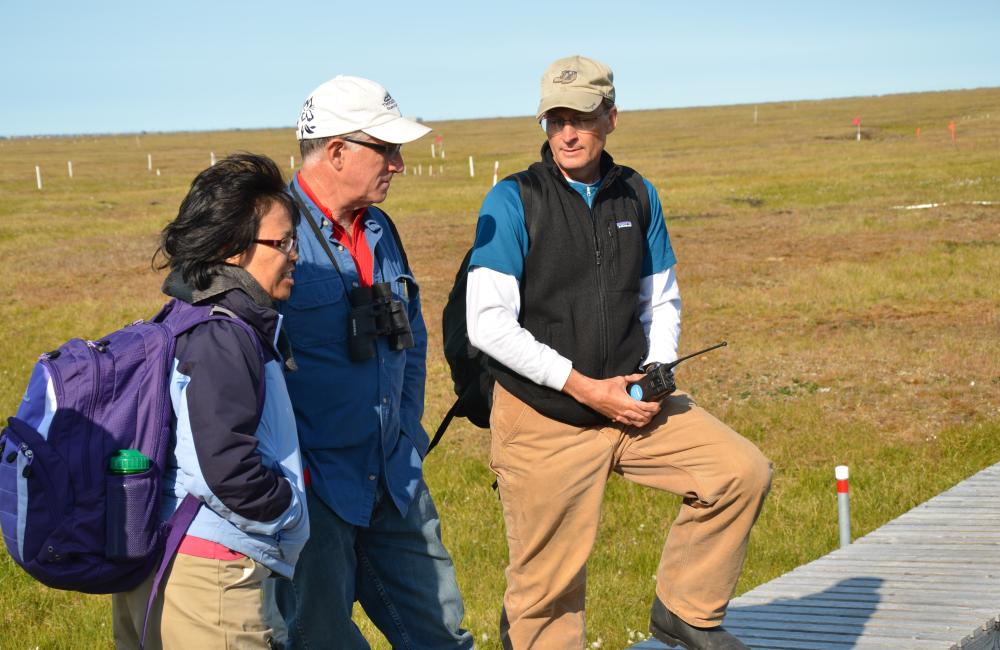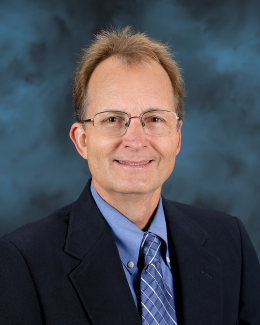Stan Wullschleger did not intend to stay so long at Oak Ridge National Laboratory, but as many other scientists can relate, time flies when you’re engaged in interesting work.
“I don’t know if you can tell while it’s happening or you just notice it in hindsight, but the lab is a wonderful place to build both depth and breadth into one’s career,” said Stan, who after 26 years at ORNL is a corporate fellow and interim director of the Environmental Sciences Division, while also maintaining his role as director of the Next-Generation Ecosystem Experiments (NGEE-Arctic) project.
Stan grew up surrounded by cornfields and pivot irrigation systems in Kansas, and earned a BS in forest management and an MS in tree physiology at Colorado State University. “I was intrigued by how plants grew and how they responded to the environment,” he said. After a 6-year stint working for the U.S. Department of Agriculture, Stan earned a Ph.D. in crop physiology at the University of Arkansas. He started at ORNL in 1990 as a post-doctoral fellow.
“I came to ORNL expecting to be here for a 2-year period—to get experience and go off to either a university or industry,” Stan says. “But during those 2 years, I found the national lab to be an exciting place to work on science of interest to the nation as part of multidisciplinary teams. I have always enjoyed my colleagues, even the challenging ones. They make you better.”
At the lab, Stan’s work has revolved around bringing together ecology, environmental science, molecular biology, and other disciplines to understand the relationship between what’s going on both above- and below-ground, and how those factors interact and complement each other. The work has largely been funded by the US Department of Energy’s Biological and Environmental Research program.
Directing 140 scientists at labs, universities
For NGEE Arctic, Stan leads a team of more than 140 scientists from national labs and universities studying how permafrost thaw may affect regional and global climate systems.
“Initially we were interested in the fate of permafrost in a warming climate—how quickly it would thaw and the effect on the atmosphere in the form of carbon dioxide or methane. Thanks to the hard work of microbiologists and geochemists working together, we were able to get a handle on that question fairly quickly,” Stan said.
As the studies progressed, the scientists noted that thawing permafrost and melting ice were creating a patchwork landscape that could become either quite wet or quite dry. The researchers then realized they would need to take that transformation into account when assessing feedbacks of CO2 and methane to the atmosphere.
Another observable change in the Arctic as frozen soils thaw has been the migration of shrubs into areas that had previously been open tundra. NGEE-Arctic is studying the phenomenon in a number of ways, including at the molecular level with scientists in ORNL’s Plant Systems Biology group. Researcher Wellington Muchero in that group recently received a DOE Early Career Award, a part of which will allow collaboration to better understand the genetic controls that allow shrubs to infiltrate those areas and the environmental consequences.
It’s been invaluable to the success of NGEE-Arctic to draw upon scientists as diverse as hydrologists, biogeochemists, molecular biologists, geophysicists, and computational scientists at ORNL and NGEE-Arctic lab partners at Brookhaven, Los Alamos, and Lawrence Berkeley, as well as multiple universities, Stan noted.
With the use of the high-performance computing resources at ORNL, the program operates on multiple scales, Stan said, from the study of CO2 and methane in a handful of soil to earth-system models running on a planetary scale.
Setting an example for the future of science
NGEE Arctic “is an example of how we’re able to pull together scientific expertise across disciplines, and leverage the capabilities of our user facilities like high-performance computing to push the frontiers of how science is done. ORNL and our partners are setting an example of what science will look like in the future.”
Stan is also engaged as a science communicator and mentor in the local community. He brings his enthusiasm for science to inner-city afterschool and summer programs, and particularly enjoys working with elementary school-aged students.
As part of ORNL’s mentoring program, Stan has worked with many postdocs and early career staff at the lab over the years, emphasizing to them the advantage of “lifting your head every now and then and looking around for people who can facilitate and enable your science. There’s a great deal of value in talking to people with different ideas, backgrounds, and perspectives.”
“Sometimes inspiration happens at unusual times and in unusual ways,” Stan said. “That’s when the excitement comes—realizing the added value and benefit of being exposed to new disciplines and talking to people outside your own area of expertise.”




